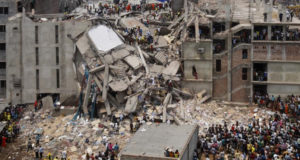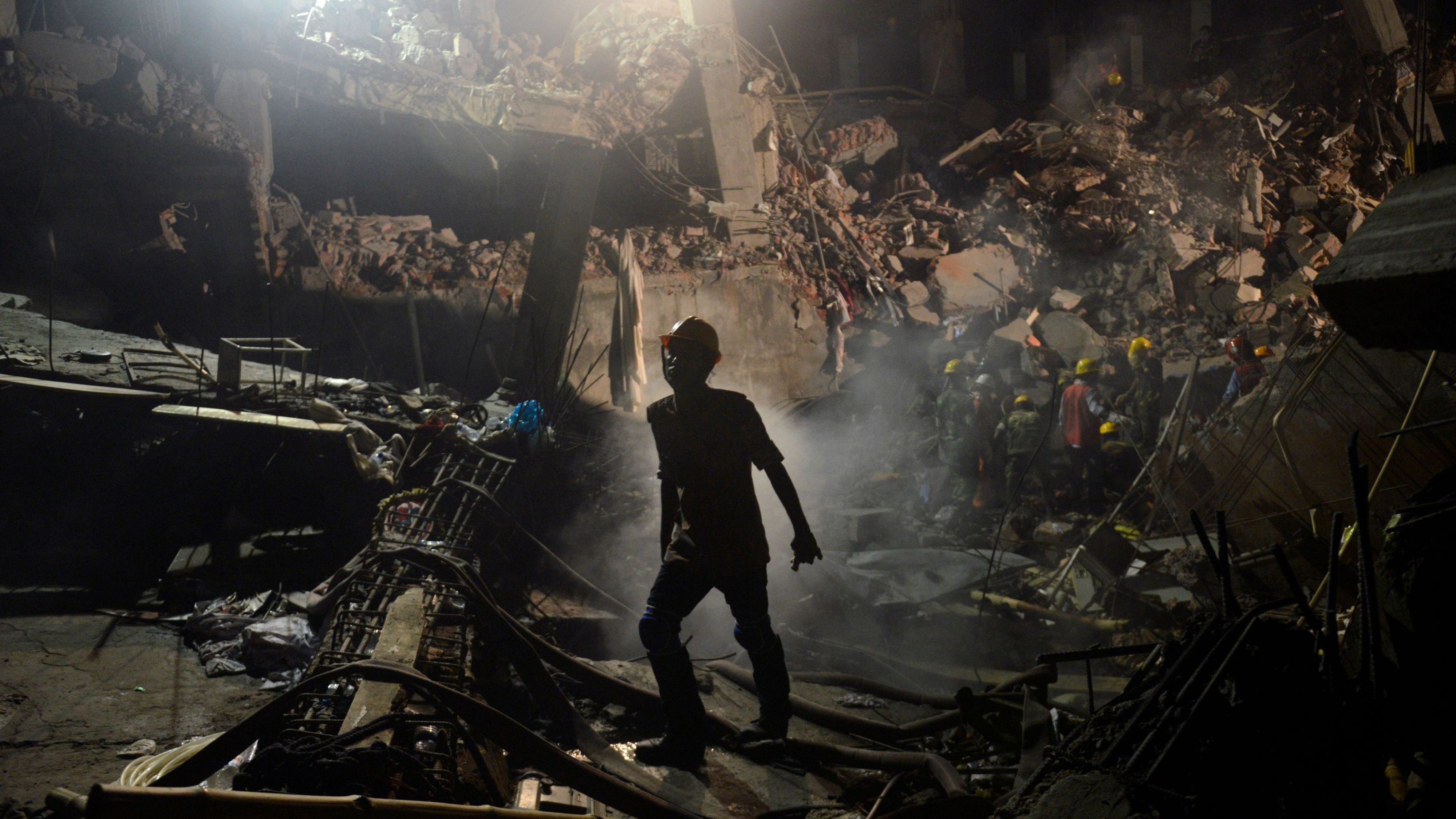Published in The Financial Express on Tuesday, 22 November 2016
In medical science, a term called ‘Fat Man Syndrome’ is used to indicate a particular physical condition of human being when a person eats excessive amount of food but it is not reflected in person’s physique as s/he looks apparently ‘thin’. In other words, eating excess food does not have any visible impact on the physical condition of the person. My point is are public- and private-sector accounts of Bangladesh facing the same trouble as a person’s ‘fat man syndrome’ when a number of ‘overexposed’ issues tended to have disturbing elements for an apparent ‘good’ macroeconomic performance of the economy.
Over the last several years, macroeconomic performance has been found quite impressive- GDP growth rate has been maintained over 6.0 per cent for last several years, which reached over 7.0% mark in FY2016; food-grain production over 35 million tonnes has been maintained since FY2013, growth of industrial production particularly manufacturing production was found to be between 6.3% to 10.7% during FY2013-15; inflation level has maintained a down-trend (6.35% in July, 2015 to 5.71% in September, 2016); wage-rate indices show a slow rise (5.5 in June, 2014 to 6.3 in September, 2017); disbursement of SME loan has maintained a double-digit growth (14.2% in FY2014 to 17% in FY2016).
Despite those impressive figures, there are areas of discontent particularly because of ‘overexposure’ in a number of public- and private-sector accounts which include, among others, excess liquidity in the banking sector, huge amount of classified loans, huge forex reserves and huge spending by the public sector. A number of those issues are interrelated and have multiple consequences on different macroeconomic indicators in the long run. The nature of growth of those aspects are such that both the sectors may be entrapped into ‘Fat Man Syndrome’. Following parts highlighted those aspects and possible concerns.
Excess liquidity in the banking sector: Excess liquidity in the commercial banks is a growing concern for the banking sector of Bangladesh. The amount hit an all-time high at Tk 1.3 trillion (1.3 lakh crore) in September 2016 from Tk 1.2 lakh crore in June 2016. These amounts were much higher than the required cash for maintaining cash reserve requirement (CRR) and Statutory Liquidity Ratio (SLR). Hence, banks are sitting with idle money against which they are paying interest to the depositors. Credit-Deposit ratio (CDR) has been declining since 2011, standing at 69.8% in September 2015, when safe limit of CDR has been set at 85% for conventional banks and at 90% for Sharia-based Islamic banks.
Lack of consistent demand for investment finance for private-sector industrial projects (75.6% of industrial loan goes to large projects) caused piling up of money in the banking sector. A part of this rise is influenced by increasing amount of external borrowing by the private sector at relatively low interest. Outstanding balance of external borrowing at the end of 2015 was USD 3.2 billion which was a lowly USD 849 million at the end of 2011.
Such excess liquidity in the banking channel is likely to have adverse impact on banks’ overall performance. Banks’ profitability measured in terms of return on asset and return on equity has shown a divergent pattern in the recent past. However, both return on asset and return on equity are negative for past several years, both for the SCBs and the DFIs.
Huge concentration of bank credits to limited number of big corporate houses: Large-scale industries (LSI) account for a major share of industrial term loan disbursement (75.6% of total term loan), followed by medium-scale (MSI) (14.3%) and small-scale (SSI) industries (10.1%). The composition has slightly changed in recent years because of targeted initiatives by the central bank to disburse more loan to the SME sector. A major share of large loan is disbursed among limited number of big corporate houses. Stress-test analysis carried out by the Bangladesh Bank (Bangladesh Bank, 2015) indicates that eight banks have failed to meet the minimum requirement of 10%. These included all four SCBs and two DFIs. According to this report, possibility of three biggest borrowers defaulting was likely to make 21 banks non-compliant in terms of maintaining minimum required capital adequacy ratio (CAR).
Such concentration of loan cannot ensure healthy environment in the banking sector. Moreover, ‘overexposure’ of debt to few corporate groups reduce their appetite for newer loans. Under the poor business environment, big groups are most likely to consolidate their businesses instead of expanding those in new areas. Creation of new business clients for the banking sector should be the target.
Over exposure of non-performing loans: High level of non-performing loan (NPL) has emerged as a major concern putting the quality of banks’ assets under question. Till March 2016, total NPL was about Tk 59,411crore which was 9.9% of total loans. As of June 2016, this increased to 10.06%. The NPL has thus crossed the recent peak of December 2014 (9.69%) when its level had declined thanks to the rescheduling of big corporate loans (CPD, 2016).
A number of measures were undertaken including appointment of observers in 14 commercial banks, in order to improve respective banks NPL situation, and to improve the quality of management and raise operational efficacy. These measures had little impact on performance of these banks as evidenced by recent NPL situation. Indeed, total NPL of six SCBs during the January-March 2016 period has risen to Tk 27,289 crore (from Tk 23,744 crore); for the 39 PCBs NPL has increased to Tk 25,331 crore (from Tk 20,760 crore).
For the FCBs, loan default has come down to Tk 1,822 crore (from Tk 1,897 crore). As a matter of fact, NPL in most of the South Asian countries has increased in recent years (CPD, 2016). However, in none of the South Asian countries situation is similar to Bangladesh, excepting Pakistan. NPL in Bangladesh is above the average level in South Asia and is more than double compared to that of India and Sri Lanka. The urgency of taking corrective steps is obvious. Capital adequacy ratio (CAR) is just above the minimum threshold level (10.8% in December 2015). This declined compared to December 2014 (11.4%). However, performances of different categories of banks and banks within particular categories are quite divergent. Performance of SCBs has deteriorated in recent years.
In order to meet the requirement of capital, government has spent about Tk 14,477 crore during the last three years towards recapitalization of SCBs in order to meet their capital shortfalls. This injection of capital has evidently had no tangible impact in terms of improving the CAR and operational efficiency of the banks concerned. In other words, recapitalisation of SCBs, without addressing the major structural, operational and political concerns (CPD, 2012), has given rise to questions as regards the justification of government’s initiatives.
Overexposure with huge foreign exchange reserves: Overexposure of forex reserves may create concern for the government. Bangladesh is currently having a forex reserve of USD31.6 billion (October, 2016) which was USD26.8 billion in October 2015 and USD25 billion in June 2015. Current excess reserves could easily be used for meeting the import payment of eight months. Although such reserves indicate a sound repayment capacity of external debt, unless efficiently utilized and properly managed, such a reserves could be headache for the economy.
Usually, the central bank invests these reserves in different kinds of low-risk government bonds. However, return on most of those bonds declined in the recent past. Bangladesh government has been exploring alternative options for utilizing the reserves in commercial terms. A number of options have been discussed, including creation of sovereign wealth fund, which could be used for lending in better commercial terms abroad. In a recent move, the government has decided to utilize the reserves internally. Unless the structure of long-term financing is properly designed, and properly monitored, the return to be generated through such investments would not be up to the mark. Moreover, there is risk for erosion of rate of return of these excess forex reserve which could otherwise be ensured through alternative investment.
Huge public expenditure: Public expenditures both under revenue and development accounts have significantly increased over the years. Revenue expenditure increased from Tk 78,136 crore in FY2010 to Tk 185,191 crore in FY2016 (rise in 137%) and development expenditure increased from Tk 25,917crore in FY2010 to Tk 71,137 crore in FY2015 (rise in 174%). Despite that rise in public expenditure, Bangladesh is still ranked behind other major South Asian countries.
However, the point of concern is mainly the quality of those expenditures. Unless those expenditures had been carried out efficiently by ensuring less wastages and misappropriation of resources, a large part of those spending would not provide adequate and expected return. Moreover, a part of the development expenditure would turn to be ‘public spending’ instead of ‘public investment’.
Recent rise in revenue expenditure is partly attributed to rise in salaries of public-sector employees (an additional Tk 12,000-12,500crore was required to meet the part of salary hike during FY2016). While rise in salary of public-sector employees was long overdue and justified, but this rise in salaries should have to be linked with rise in productivity and efficiency and such a mechanism to appreciate the improvement of in employees’ productivity and efficiency is rather missing. Moreover, portfolio of a large section of public employees did not change even after they got promoted, which rather indicates inefficient use of human resources in the public-sector. This is happening owing to lack of adequate senior-level posts for promoted public-sector employees, which rather raised question about justification of promotion of the employees in some cases.
On the other hand, rise in development expenditure is mainly attributed to meeting the expenditures of big projects mostly related with infrastructure development. Most of these projects would facilitate production and investment in the private sector. A large number of those projects are ‘priority’ projects of the government. Besides, government is signing G-to-G agreements/memorandum of understanding (MOU) with different countries for financing different projects. Without questioning the importance of these projects, it is curious to see huge amount of expenses proposed and approved in those projects, which raised the concern over quality of pre-feasibility study, due diligence on part of monitoring agencies and quality of internal and external auditing etc.
Given the slow progress of a number of big projects, the scope of ‘project-success’ has been eroding although their ‘economic success’ still remains. Without having timely and cost-effective implementation and ensuring adequate return through facilitating private investment and production and employment generation, such expenditures would only add additional debt burden for the economy.
Consequences of over-exposition of public and private accounts: The overexposure of some of the public- and private-sector accounts has raised concerns which are similar to the symptom of ‘fat man syndrome’ and these concerns might have multiple consequences for the economy. Huge idle money in the banking sector portrays not only the inefficiency of the banking sector but also rises in banks’ operating expenses. Such a situation has consequent impact on borrowing and lending rates of commercial banks which are supposed to decline but did not happen so smoothly. Over-dependence on a limited number of big corporate houses poses question to the overall vibrancy in the debt market. In the backdrop of weak business environment, these corporate houses have limited interest/appetite for expansion rather they are consolidating their businesses. Illicit financial flow abroad is another consequence of such situation. While initiatives for enhancing the credit portfolio in the SME sector are being carried out by banks under the direction of the Bangladesh Bank to some extent, however, those credits needs to be well-targeted to reach specific SME initiatives/activities. On the other hand, overexposure of non-performing loan, despite various initiatives to reduce the amount, particularly through the rescheduling of big loans, did not make major changes in the overall situation. Since a large part of these loans is linked with borrowers who are ‘habitual’ defaulters and also have their political influence, there is limited possibility to achieve better success through this traditional approach. The huge amount of forex reserves, as it is being planned to invest in other long-term opportunities both at domestic and international markets, requires proper guidelines and efficient monitoring, without which such money would rather provide a low return.
Conclusion: There may be apparent complacency in the government with the performance of the economy. However, there are ‘loopholes’ and ‘hotspots’ in some of the areas of public- and private-sector accounts which have been growing in parallel with the economic growth in the country — termed here as symptoms of ‘fat man syndrome’. The government may have found those as not so big concerns. But those might leave deeper adverse impacts, having multi-faceted implications. These issues are related to lack of efficiency in private and public sectors, poor governance and monitoring mechanism and less political will. Both public and private sectors need to take necessary reform measures — some of those are operational issues but a large part of those are linked with political willingness of the government to address those concerns.
Dr Khondaker Golam Moazzem is Additional Research Director at the Centre for Policy Dialogue (CPD), Dhaka. moazzemcpd@gmail.com
 CPD RMG Study Stitching a better future for Bangladesh
CPD RMG Study Stitching a better future for Bangladesh



